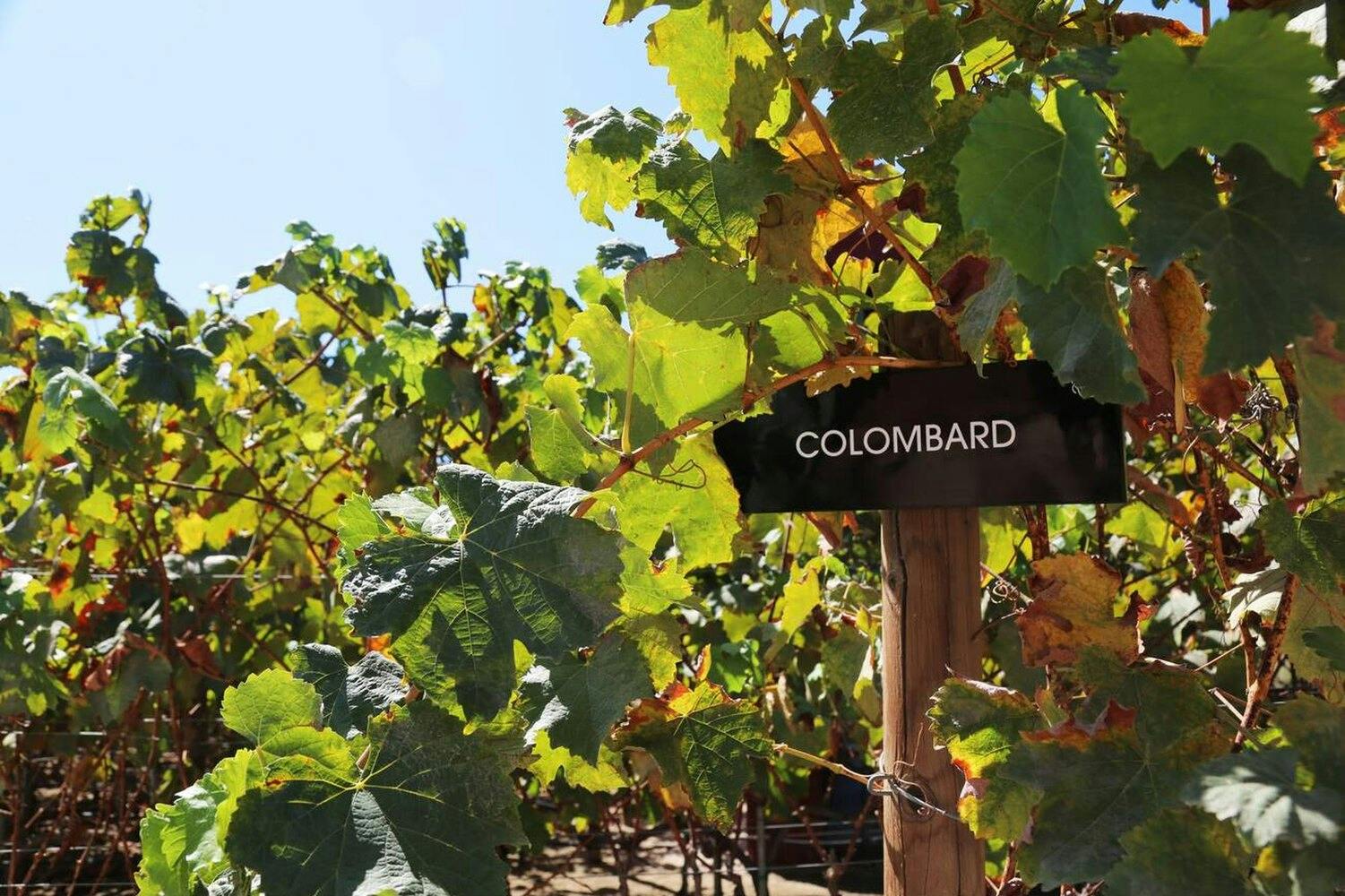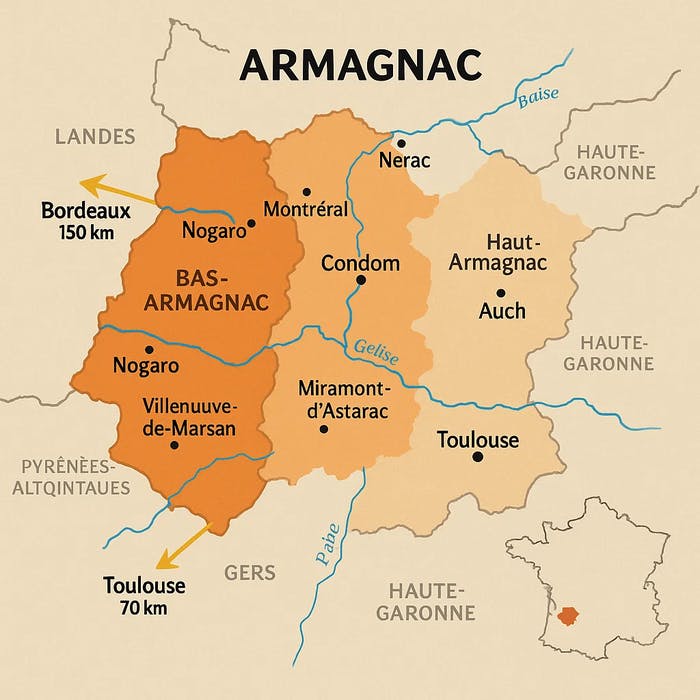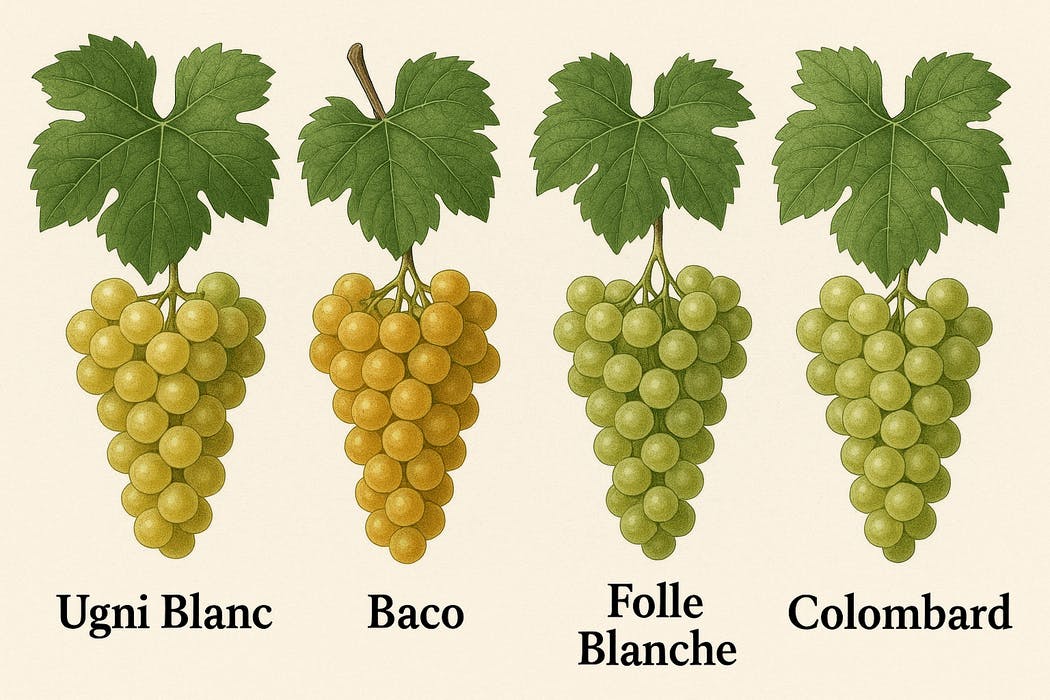
Armagnac, France’s oldest eau-de-vie, is born from a region defined by a rich diversity of soils and grape varieties. Its aromatic profile shifts depending on these factors, shaping the style and ageing potential of the spirit. This article explores the main production areas and the grape varieties used to craft Armagnac.
The Armagnac appellation area is divided into three main zones, each bringing its own distinctive characteristics to the eaux-de-vie produced there.
Bas-Armagnac
Located in the western part of the region, between the Gers and the Landes, Bas-Armagnac stands out for:
- Sandy-silty soils, known as sables fauves, rich in iron, which yield light, fruity eaux-de-vie.
- Naturally high acidity in the base wines, contributing to the finesse and complexity of Armagnacs from this area.
- Dominant aromas of plum, violet, and dried fruits, typical of the region.
Armagnac-Ténarèze
Located in the heart of the appellation, Ténarèze is known for:
- Clay-limestone soils, which produce more structured and powerful eaux-de-vie.
- A need for longer ageing to soften these more robust spirits.
- An aromatic profile marked by notes of spice, leather, and candied fruit.
Haut-Armagnac
Found in the southeastern part of the appellation, Haut-Armagnac is a more discreet production zone due to:
- Mainly limestone soils, which are less favorable for growing grapes for Armagnac.
- Eaux-de-vie often noted for their refined character and delicate floral notes.

The grape varieties used for Armagnac
The production of Armagnac relies on several grape varieties authorized by the AOC, each contributing unique aromatic and structural characteristics.
Ugni Blanc
- The dominant grape variety in the appellation.
- Brings finesse and high acidity, promoting harmonious ageing.
- Produces balanced Armagnacs, well-suited to long maturation in cask.
Folle Blanche
- A historic grape variety, now less commonly used.
- Yields highly aromatic and floral eaux-de-vie.
- Often used for young Armagnacs or in blends to add freshness.
Baco
- A hybrid grape introduced after the phylloxera crisis.
- Produces rounder, more structured eaux-de-vie, with notes of ripe fruit and spice.
- Particularly well-suited for long-ageing Armagnacs.
Colombard
- Adds a touch of spice and liveliness.
- Used in blends to enhance aromatic complexity.

The influence of terroir and grape varieties on ageing
Ageing in oak casks plays a crucial role in revealing the character of each terroir and grape variety.
- Armagnacs from Bas-Armagnac, often made from Ugni Blanc, Baco, and occasionally Folle Blanche, develop delicate aromas of fresh fruit and vanilla.
- Those from Ténarèze, crafted with Ugni Blanc, Baco, and Colombard, display a more pronounced structure, evolving toward notes of cocoa and leather as they mature.
- The type of oak used also shapes the final profile: black Gascony oak enhances spicy notes, while softer oak brings roundness and smoothness.
TO DISCOVER ARMAGNAC FURTHER
La Maison du Whisky has three boutiques in Paris:
In each of these boutiques, you'll find a wide selection of whiskies, rums, sakes, and other fine spirits.
Follow our tasting calendar for upcoming events, or visit the Golden Promise Whisky Bar, which offers an extensive selection of whiskies and other spirits by the glass.
You can also discover other articles about armagnac.
Written by
- Quentin JEZEQUEL - SEO project manager at LMDW.
Verified by
- Didier GHORBANZADEH - Wine & Spirits Expert at LMDW
- Adrien GASTECLOU - LMDW Training Manager
- Clotilde NOUAILHAT - Editorial and Corporate Communications Manager at LMDW
Published on 05/07/2025